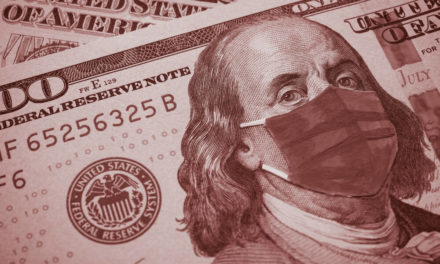The advanced numbers for third-quarter gross domestic product (GDP) in the U.S. came out, and they were a doozy. Real GDP increased at an annual rate of 33.1% in the third quarter.
Or did it?
The devil is in the details here. By any account, it was a great quarter. GDP snapped back sharply after the economy collapsed in the second quarter. But the economy isn’t a third larger than it was three months ago.
University of Michigan economist Justin Wolfers went on a tweetstorm on Thursday to explain:
GDP rose by +7.4% in Q3 (pretty much exactly as expected), after falling by -9.0% in Q2 and -1.3% in Q1. All told, the economy is -3.5% smaller than it was at the end of 2019.
For context, the economy is roughly as far below its peak as in the darkest days of the last recession
— Justin Wolfers (@JustinWolfers) October 29, 2020
Wolfers breaks it down in replies to his own tweet:
“Reporting *quarterly* GDP growth at an *annualized* rate answers the question: If the economy also grew at this rate for the next 3 quarters, how much larger would the economy be? But there’s no chance that will happen, so the annualized rate answers a question no-one is asking.”
So, no, the economy did not really grow by a third, just as it didn’t really shrink by nearly a third in the second quarter. The COVID-19 lockdowns skewed the data both ways, so we need to take the numbers with a massive grain of salt.
But there is still quite a bit of good information to glean from this. The economy may be 3.5% smaller than it was pre-coronavirus, which is a decline roughly equal to what we saw during the 2008 financial crisis.
But it’s still rebounding strongly. A 7.4% jump is nothing to brush off.
Replying to his own tweets, Wolfers added this zinger:
A true story and a GDP analogy: The most rapid improvement in my lung capacity did not occur during my most intense marathon training, but rather a year later when I was recovering from pneumonia. Even so, I still felt like crap, and wish I had done more to avoid getting sick.
— Justin Wolfers (@JustinWolfers) October 29, 2020
Wolfers argues that you see the best improvement when you’re coming off of a low base.
When the economy is already firing on all cylinders, you don’t see massive 7.4% jumps. The biggest improvements happen when things go from bad to less bad, not good to better.
And that’s where we are now. We’ve gone from horrendously bad to a little less bad.
It took years for the economy to heal after 2008, and it won’t be different this time around.
But that’s just fine. It’s the direction that matters more than the absolute number.
The GDP report isn’t really tradable news. I’ve literally never once met a trader that made money based on their interpretation of a GDP report. But there are a few points to take to heart.
What We Can Learn From the GDP Jump
Lesson 1: It takes larger gains to recoup losses.
Using the reported numbers (sorry Professor Wolfers…), GDP dropped by 31.4% in the second quarter and then grew by 33.1% in the third quarter. But this doesn’t mean we’re up a net 1.7%.
Let’s say you have a stock worth $100 per share and it drops 31.4%. It’s now worth $68.60. But starting at that base, a 33.1% increase only gets you back to $91.31. To get back to $100, you’d have to make 45.8%. If you lose 50% on a trade, you have to make 100% on the next trade to get back to break even. If you lose 90%, you have to make 10 times your money to get back to break even.
This is why Chief Investment Strategist Adam O’Dell and the rest of the Money & Markets team harp on the importance of avoiding losses while investing. It’s just as important — if not more so — than finding large profits.
Limiting your losses via stop-loss orders or other risk management tools is critical. You avoid digging yourself into a hole you’ll never dig out of.
Lesson 2: The market almost always leads the economic data.
The S&P 500 bottomed out early in the second quarter, before the real economic damage hit. It then shot higher, virtually uninterrupted for the next six months before improvements started to show up in economic data.
On Thursday, the day the GDP stats were released, the market only rose modestly.
So, while data like this is good for cocktail fodder (over Zoom happy hours, alas), it’s generally pretty useless for investing.
So let’s look ahead.
The fourth quarter of 2020 should be interesting. For retail, this is the make-or-break quarter, though hitting the malls in the midst of a second wave of COVID-19 infections will be problematic. Expect it to be another banner quarter for Amazon.com Inc. (NYSE: AMZN) and other online retailers.
Money & Markets contributor Charles Sizemore specializes in income and retirement topics. Charles is a regular on The Bull & The Bear podcast. He is also a frequent guest on CNBC, Bloomberg and Fox Business.
Follow Charles on Twitter @CharlesSizemore.





